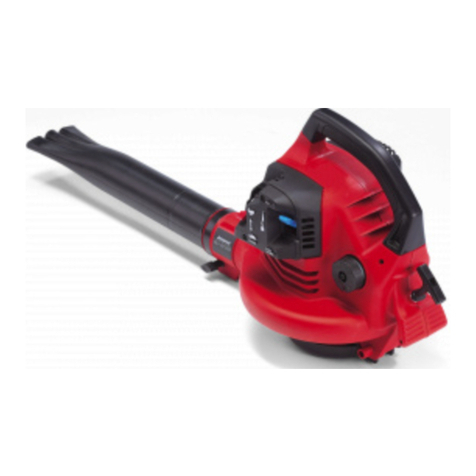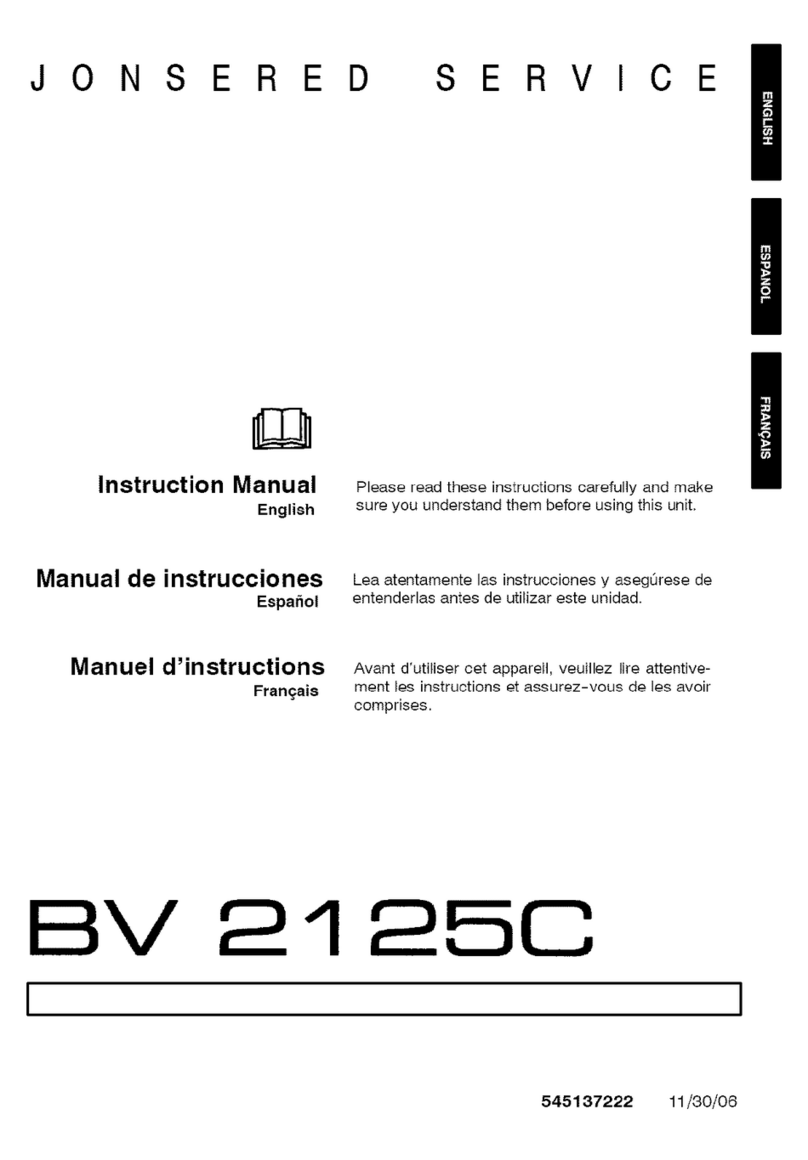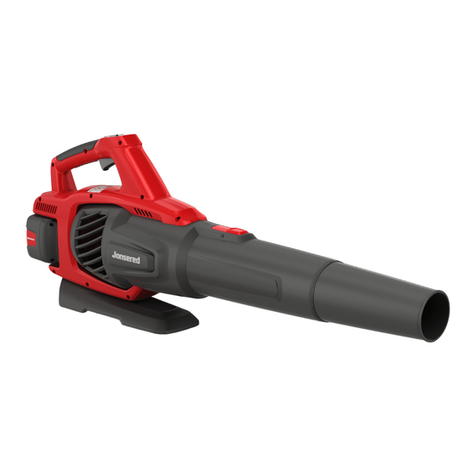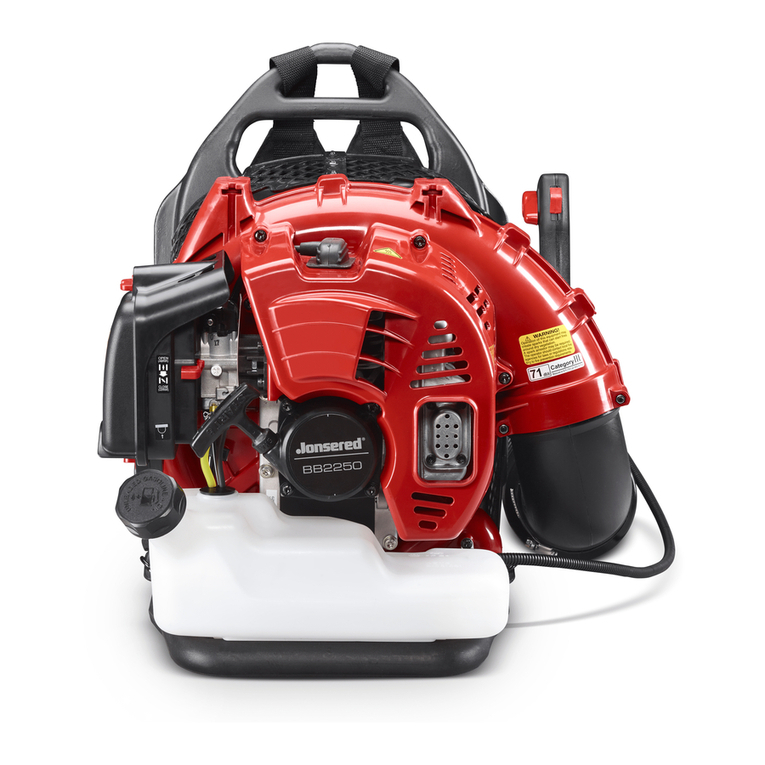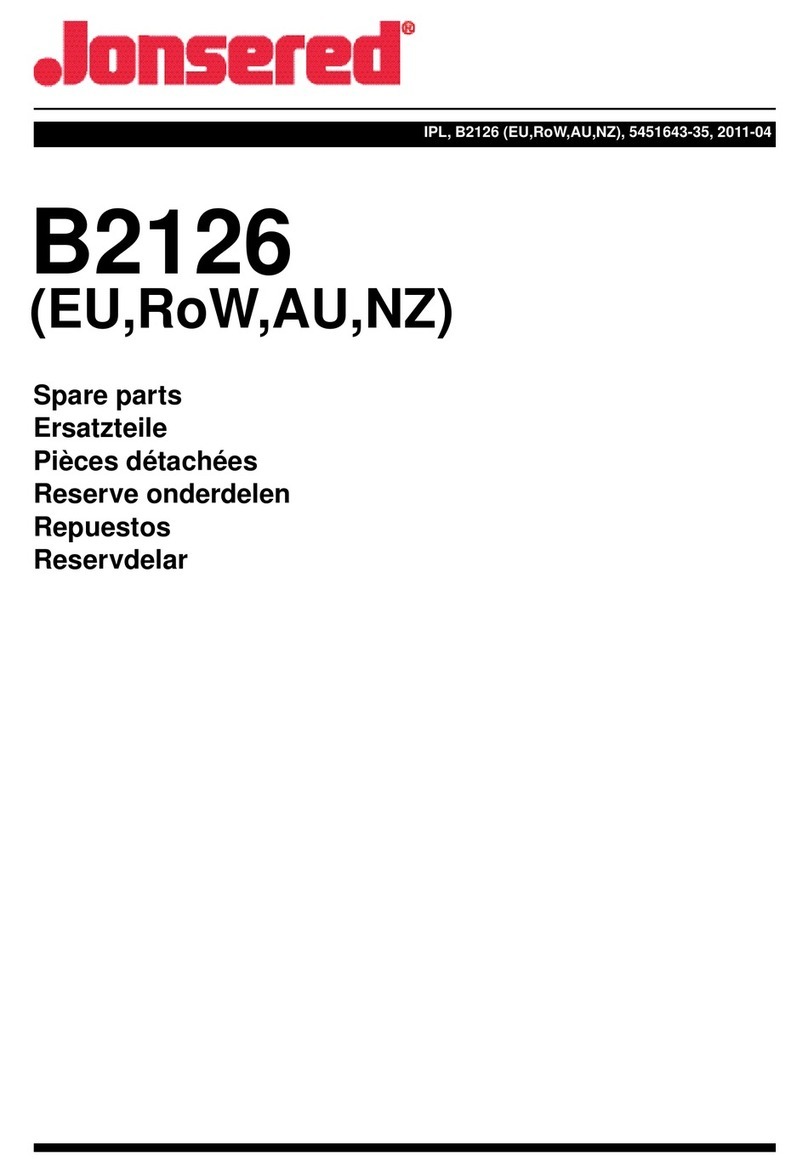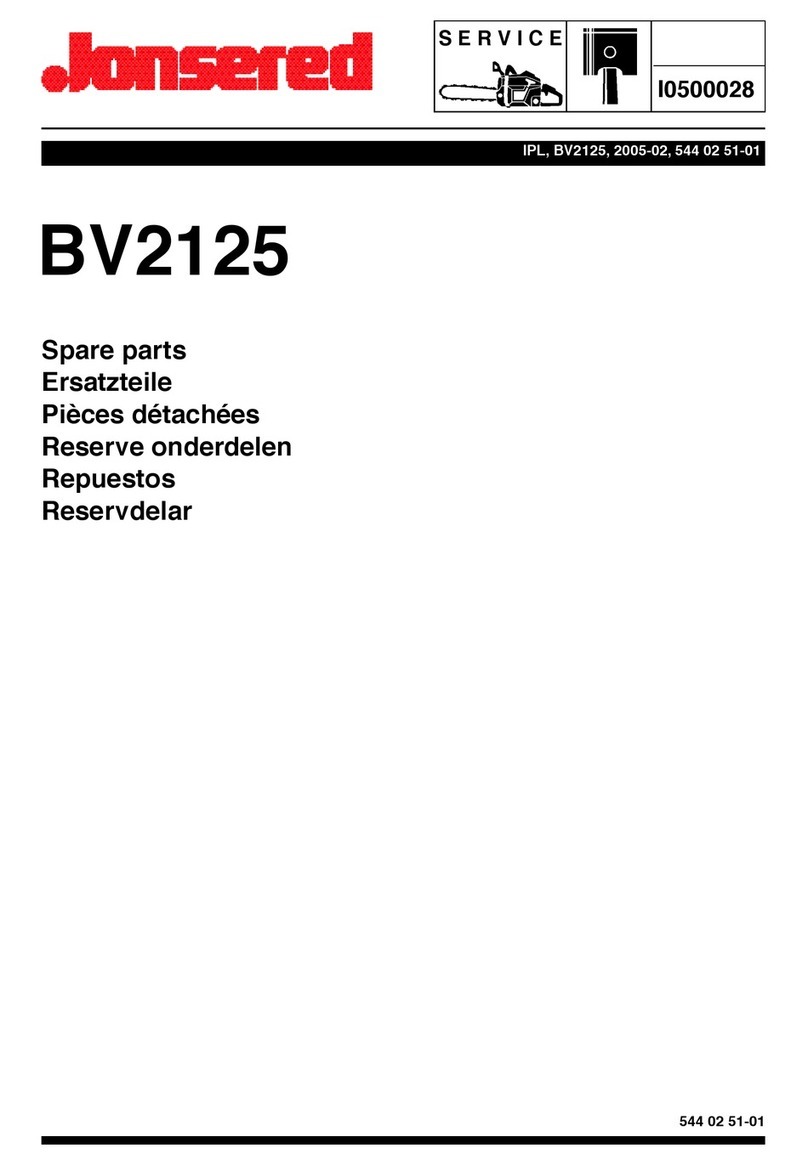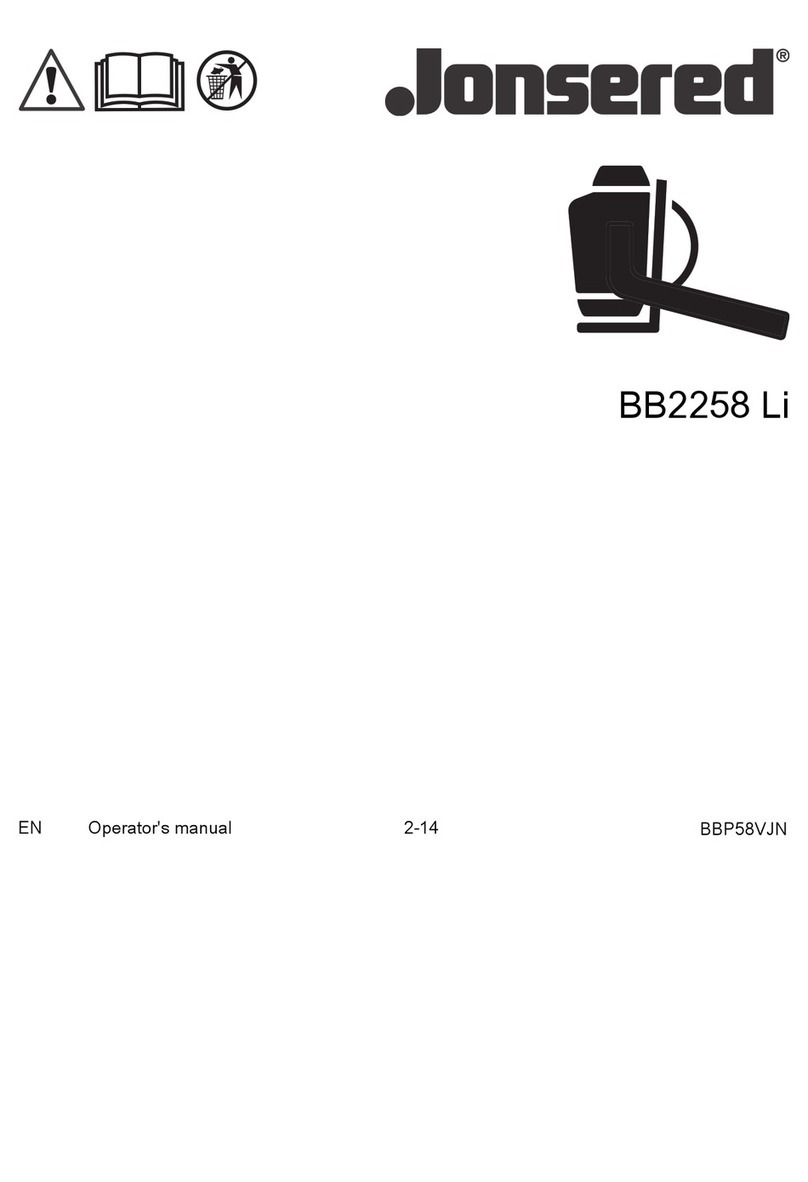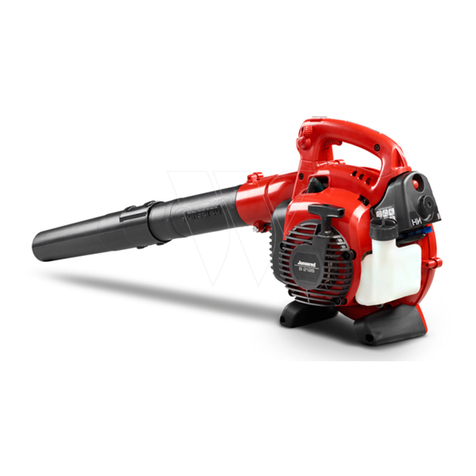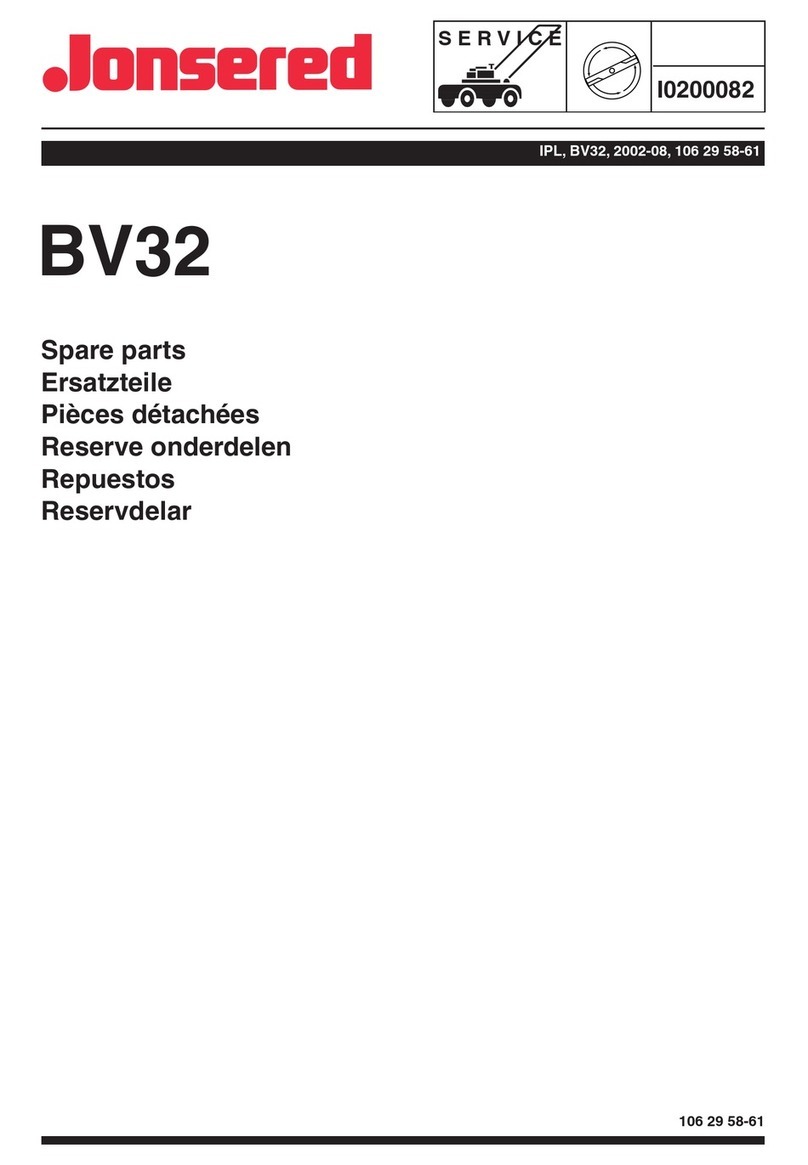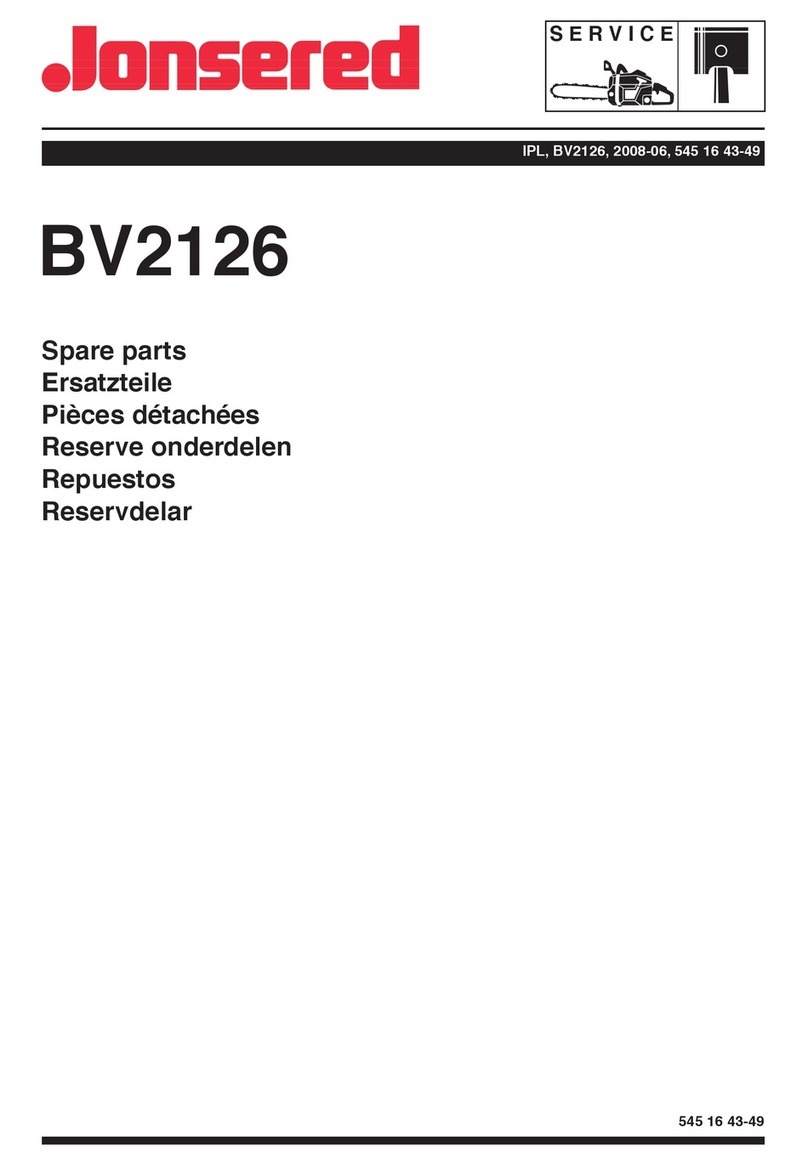
English---4
115439327 Rev. 1 6/1/11
SAFETY INSTRUCTIONS
Muffler
The muffler is designed to give the lowest
possible noise level and to direct the en-
gine’s exhaust fumes away from the opera-
tor. Mufflers fitted with catalytic converters
are also designed to reduce harmful ex-
haust components.
Safety equipment
The blower is equipped with a number of
safety devices and guards for the preven-
tion of accidents. These are described in
the general description of the blower.
The safety devices and guards also require
regular inspection and maintenance. These
measures and the interval at which they
should be carried out are specified in the
Maintenance section.
WARNING: The exhaust fumes
from the engine are hot and may
contain sparks which can start a fire.
Never start the machine indoors or
near flammable material!
Fuel safety
Special safety instructions apply to the type
of fuel used for the blower. These instruc-
tions are specified under the Fuel handling
section.
Personal safety equipment
Persons who use the blower shall wear the
following safety equipment:
1. Approved ear protection.
2. Approved eye protection.
3. Approved protective gloves.
4. Boots or work shoes with a non--slip sole.
5. Face mask when operating the blower in
dusty environments.
Personal safety
The following instructions apply to persons
operating the blower:
SThe operator shall have read and under-
stood the contents of this manual.
SDo not wear loose clothing, scarves or
neckchains or let long hair hang loose,
since these can be drawn into rotating
parts of the blower and cause injury.
SDo not operate the blower while under
the influence of alcohol, drugs or when
you are tired.
SDo not allow minors to operate the
blower.
SAlways have a first aid kit nearby.
WARNING: The fuel used to run
the blower has the following
dangerous characteristics:
1. Volatile liquid: its vapor and
exhaust fumes are poisonous.
2. Direct contact can cause skin
irritation.
3. It is extremely flammable.
WARNING: Mufflers fitted with
catalytic converters become extreme-
ly hot during use and after stopping.
This also applies at idling speeds.
Contact can result in burns to the
skin.Beawareoftheriskoffire!
WARNING: The blower must
never be used if any of the safety
devices or guards are missing,
damaged or not in working order.
WARNING: This machine pro-
duces an electromagnetic field du
ring operation. Under some circum-
stances, this field may interfere with
active or passive medical implants.
To reduce the risk of serious or fatal
injury, we recommend persons with
medical implants to consult their
physician and the medical implant
manufacturer before operating this
machine.
